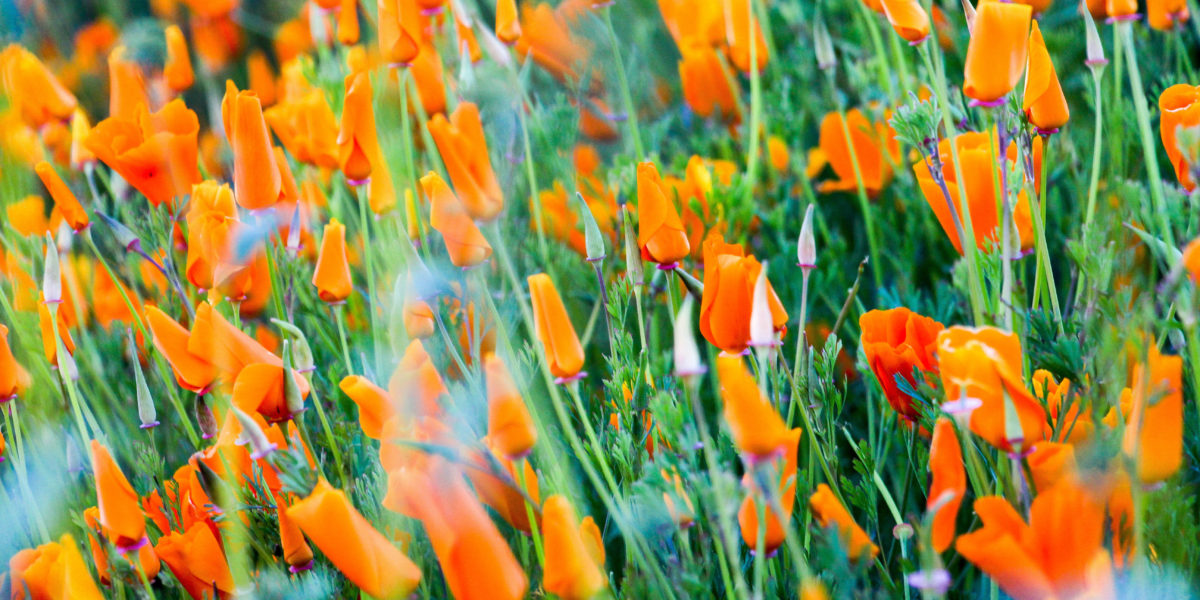
The Basics of Super Bloom Etiquette: Or, How Not to Be a Wildflower Jerk
After the influencers, the motorcycles, and the helicopter (!), it’s clearly time for this simpler-than-simple guide to visiting California’s blossoming lands. You surely don’t need it, but some people do…

Call us naïve, but there were certain things we didn’t think we’d have to explain about visiting the super bloom, the once-in-a-decade-or-so explosion of wildflowers that some years ripples across the deserts of Southern California. (Fingers crossed for spring 2023, which kicked off with the sort of torrential rains that often precede a super bloom.)
We didn’t think we’d have to say, Don’t pick the flowers. But people picked the flowers.
We didn’t think we’d have to say, Don’t ride motorcycles through the fields. But someone rode a motorcycle through the fields.
We definitely didn’t think we’d have to say, Don’t charter a helicopter, land it in the middle of a field, and start bushwhacking. But yes, that happened too.
So while we’re sure that you, our dear Sunset readers, know the ins and outs of the outdoors, some people (who shall remain nameless!) clearly don’t, so we’ll say it right here, just to be clear: Leave no trace. Please don’t steal the flowers that everyone has come to see. That also means don’t bring any heavy equipment into the fields. This includes: airplanes, steamrollers, bicycles, wagons, skateboards, boats, and just about anything other than your own two feet. The super bloom is fleeting enough without visitors snuffing out the color prematurely.
How else can you leave no trace? Staying on the trails is a good start—but be mindful of what is a trail and what isn’t. Not every bare patch is a sanctioned path. It only takes a few bushwhackers tromping through the bushes to create what conservationists call “desire lines” or “social trails.” Before long a legitimate-looking trail begins to emerge, beckoning others to unknowingly make the same mistake. Soon, there are additional scars in the earth that may take years to heal—if they ever do.
If all of that is too complicated, follow this rule: When in doubt, stop and ask yourself “What would happen if everyone did this?” Maybe you want to snap off one little poppy, or take that shortcut to the hillock peak for a view, but what if everyone visiting the park today did the same thing? Once you pluck a bloom, it’s done until the next time there’s enough rain to make it sprout again—and since super blooms happen on average every 10 years, that could be a decade from now.
Perhaps the easiest way to minimize wear and tear on these beautiful vistas: Don’t visit the most vulnerable parks. In 2019, the year of the last super bloom, those included Walker Canyon, which got so slammed that it started forcing visitors to arrive by shuttle, and Joshua Tree National Park, which was still recovering from vandalism sustained earlier that year.
Instead, check out less-touristed alternatives, like the Carrizo Plain National Monument, in San Luis Obispo County, which is spectacular in a super bloom year.
Anza-Borrego Desert State Park can also be a carpet of color.
Even closer to an urban area is Malibu Creek State Park. It may not be visible from space like Walker Canyon, but it’s gorgeous and not yet trampled by selfie-seeking influencers.
Let’s keep it that way, okay?
Read the Current Issue Here!
Get one year of Sunset—and all kinds of bonuses—for just $24.95. Subscribe now!
